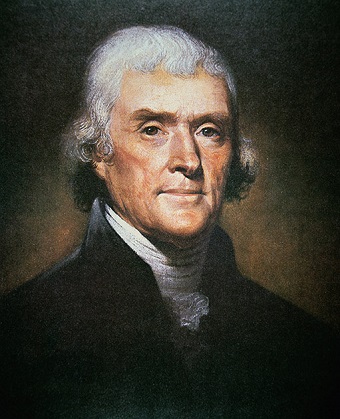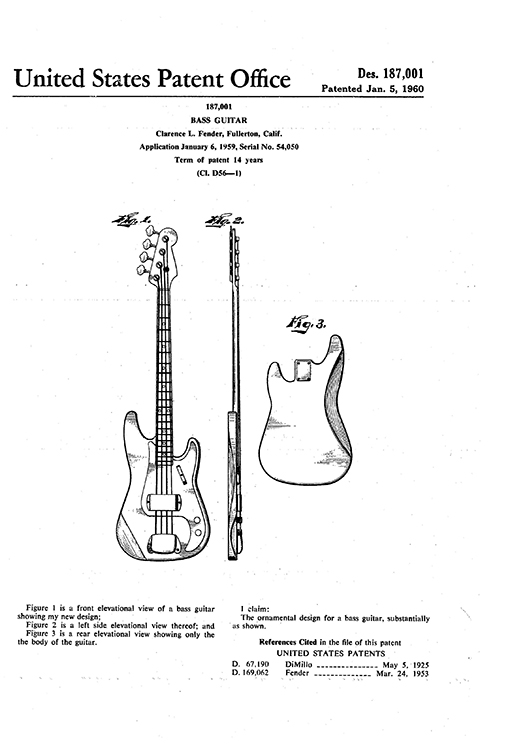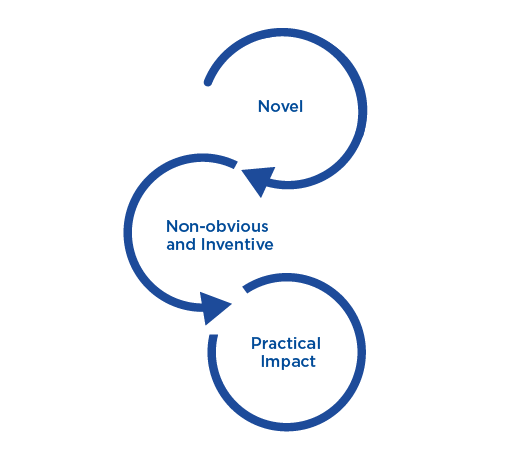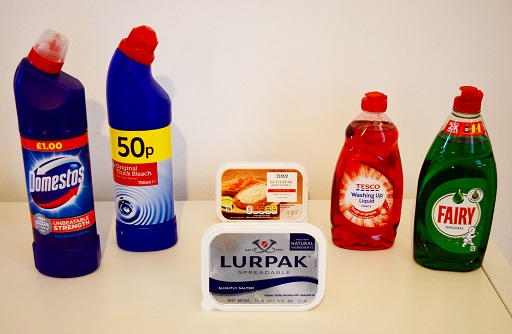Use 'Print preview' to check the number of pages and printer settings.
Print functionality varies between browsers.
Printable page generated Friday, 21 November 2025, 2:28 AM
Managing and protecting your intellectual property
Introduction
After much work and effort you have finally made the breakthrough and have your big idea. Perhaps it was a slow and arduous process based on iteration and refinement, or maybe a moment of genius worthy of Archimedes in his bathtub shouting ‘Eureka!’ No matter how it happened, now is the time for you to do something with your new product or service, but first you need to manage and protect your intellectual property (IP).

Thomas Jefferson, the US statesman, insisted that ideas cannot be owned, yet in many ways this is exactly what intellectual property is all about. In this unit you will explore the key elements of intellectual property as they relate to start-ups and entrepreneurial businesses.
Please note: while this course is intended to provide you with general guidance it should not be construed as definitive legal advice nor should it be regarded as such.
1 What is intellectual property?
The World Intellectual Property Organization (WIPO) – a specialist agency of the United Nations – defines intellectual property as follows:
Intellectual property refers to creations of the mind: inventions; literary and artistic works; and symbols, names and images used in commerce.
Importantly, the specifics of intellectual property, including definitions, vary from country to country. The UK’s Intellectual Property Office emphasises that IP goes beyond a simple idea:
Intellectual property is something unique that you physically create. An idea alone is not intellectual property. For example, an idea for a book doesn’t count, but the words you’ve written do.
This hints at the fact that IP can be owned, and the Intellectual Property Office further asserts that:
You own intellectual property if you:
created it (and it meets the requirements for copyright, a patent or a design)
bought intellectual property rights from the creator or a previous owner
have a brand that could be a trade mark, e.g. a well-known product name.
Intellectual property can:
have more than one owner
belong to people or businesses
be sold or transferred.
2 Why is IP important?
Intellectual property laws are intended to promote technical ingenuity and cultural creativity by granting private ownership rights.
There are several important practical reasons why you should protect your IP. You should do so in order to:
protect it against infringement by others and ultimately defend in the courts your sole right to use, make, sell or import it
stop others using, making, selling or importing it without your permission
earn royalties by licensing it
exploit it through strategic alliances
make money by selling it.
The importance of IP and its protection is demonstrated by the fact that the US Patent and Trademark Office alone receives more than 500,000 new patent applications each year (United States Patent and Trademark Office, 2015). The equivalent figure in Europe is over 300,000 new patent filings each year (European Patent Office, 2017).
Non-disclosure agreements
Before engaging with potential investors, advisors, suppliers or, indeed, any other third party, it is important that you consider signing a non-disclosure agreement (NDA).
A non-disclosure agreement:
is a legal contract between at least two parties that outlines confidential material, knowledge, or information that the parties wish to share with one another for certain purposes, but wish to restrict access to or by third parties.
As the UK’s Intellectual Property Office points out: ‘It is important that you don’t assume conversations with advisors are automatically confidential’ (Intellectual Property Office, 2015b).
While an NDA is not a guarantee that your idea and discussions will remain confidential, it will at least give you some protection and recourse should it be needed.
At any stage of the innovation process, from invention to diffusion, a bright idea with market potential can be a target for inadvertent or even unscrupulous copying. The invention of the telephone, movie projector and television would fall into this category (Thompson, 2012).
Equally, however, it is not unknown for different groups of people to be working on similar ideas in parallel or for members of a team to be contributing different ideas, meaning that the origins of inventive ideas might be difficult to identify with precision.
The story of the invention of Facebook is a recent case in point. While the social media platform might be most associated in the public mind with Mark Zuckerberg, actual ownership and invention rights have been disputed by members of the team who created the first prototype. This was famously depicted in the 2010 film The Social Network.

It is consequently sensible for inventors to establish their claim to a particular invention and to protect it against unauthorised exploitation by others.
Choosing not to protect your IP

Curiously, on occasion people consciously choose not to patent or otherwise protect their IP. Why?
For some it is because they have moral objections to ideas, etc. as intellectual property (the open-source computer operating system Linux is a classic example), while others do not wish to fully disclose the nature of their innovation as would be required by a patent filing. Yet others see it as perhaps being too much hard work, though this can lead to subsequent challenges if others start using your idea.
3 Types of IP protection
There are different forms of legal protection to guard against the copying or theft of intellectual property. The most important of these are described in the following sections.
3.1 Patents
Patents grant inventors exclusive rights to make, use or sell a new invention for a defined period, currently 20 years in the UK. Howkins argues that ‘patents are a straightforward example of ideas as property as they give a monopoly almost as robust as ownership of a physical thing’ (Howkins, 2013, p. 98).
The owner of a patent may consequently sell the patent or, indeed, authorise others to make, use or sell the invention in exchange for royalties or other compensation.
For an invention to be patented it must generally satisfy three basic criteria:
It must be novel (i.e. new and unexpected).
There must be an element of inventiveness/invention in a way that is non-obvious and not just a modification of something that already exists.
There must be practical impact and it must be capable of being used.
What cannot be patented?

While any list of what cannot be patented will inevitably vary over time and between different countries, the following is a list of the key items that could not be patented in the UK as at 2018:
literary, dramatic, musical or artistic works
a way of doing business, playing a game or thinking
a method of medical treatment or diagnosis
a discovery, scientific theory or mathematical method
the way information is presented
some computer programs or mobile apps
‘essentially biological’ processes like cross-breeding plants, and plant or animal varieties.
While in the UK you cannot patent computer programs, new plant varieties or human DNA, in the USA patenting is allowed on some of those categories of invention. In recent years efforts have been made to update US legislation to be more in line with UK and European terms (see Babbage, 2013), though it is worth remembering that these differences exist if you intend to trade internationally.
Activity 1 Can your invention be patented?
Reflect on your business idea. If you have invented something, consider whether it meets the three key criteria for a successful patent application or, indeed, whether it is something that cannot be patented.
Discussion
Even if you have invented something that cannot be patented it is worth looking at other ways of protecting your intellectual property. These are discussed in the next sections.
Making a patent application
According to the UK’s Intellectual Property Office, a patent application must include:
a written description of your invention: allowing others to see how it works and how it could be made
drawings: to illustrate your description
claims: precise legal statements in the form of single sentences that define your invention by setting out its distinctive technical features
an abstract: a summary that includes all the important technical aspects of your invention.
The period from initial application through to the granting of a patent can take several years, as time must be allowed for a detailed evaluation and searches of existing patents to ensure that there is no infringement of other people’s IP.
3.2 Copyright
Copyright provides the originator(s) of creative products with exclusive ownership rights to protect their creation, be it literary, artistic or otherwise.
The World Intellectual Property Organization specifies the difference between copyright and patents as follows:
Copyright law and patent law provide different types of protection. Copyright protection extends only to expressions, and not to ideas, procedures, methods of operation or mathematical concepts as such, whereas a patent is an exclusive right granted for an invention, which is a product or a process that provides a new way of doing something, or offers a new technical solution to a problem.
Copyright protection is formality-free in countries party to the Berne Convention for the Protection of Literary and Artistic Works (the Berne Convention), which means that protection does not depend on compliance with any formalities such as registration or deposit of copies.
Importantly, international discussions and negotiations over time have:
resulted in the generally accepted principle that computer programs should be protected by copyright, whereas apparatus using computer software or software-related inventions should be protected by patent.
Consequently, if your entrepreneurial idea involves an app or software in some shape or form, while you might not qualify for a patent you may well qualify for some degree of copyright protection.
3.3 Trademark
A trademark is typically seen as a ‘distinctive name, mark or symbol that is identified with a company’s products’ (Trott, 2008, p. 147). To be successfully registered, a trademark should:
be distinctive
not be deceptive
not cause confusion with previous trademarks.
The range of items for which a registered trade mark can be sought includes:
words
sounds
logos
colours
a combination of any of these
Despite these guidelines competitors do sometimes emulate well-known brands a little too closely, though this carries significant risks for all involved and is not recommended.
Activity 2 Well-known trademarks
3.4 Registered design
Lastly, a registered design designation might be a useful way of protecting product designs. Registering a design refers to the outward appearance of a product and in the UK applies specifically to three-dimensional products only. In the UK, unique designs are automatically deemed to have some form of protection as ‘unregistered designs’ as long as it is an original design and one that is not too commonly found. The unregistered design designation lasts for 15 years.
Should you wish to formalise this designation you can apply to have your design registered, which will give it protection for 25 years. As Jolly argues:
A community registered design is a relatively inexpensive but potentially valuable right. For a business with a broad array of evolving and distinctive consumer products, planning ahead and approaching design protection strategically rather than serially and reactively can help create an effective web spanning the product range, without leaving avoidable gaps or incurring excessive cost.
In order to qualify as a registered design, apart from being a three-dimensional object your product should meet a number of key criteria:
The design must be new.
The design cannot be offensive (it cannot feature graphic imagery or words).
It cannot utilise protected flags and emblems (e.g. the Royal Crown or the Olympic rings).
It cannot be an invention.
Examples of registered designs include Crocs, the shape of the Coca-Cola bottle and the design of some cars.
4 Developing an IP strategy
As with any other form of strategy, IP strategies come in many forms:
A good IP strategy allows the business to recognize the IP it owns and provides a strategy to protect, optimize, and monetize the IP. IP rights can serve as valuable business assets and can be monetized in several ways. For example, the addition of a patent, or simply a patent application, to an early-stage company’s IP portfolio, makes the company an eye-catching investment opportunity to equity financiers, such as venture capitalists (VCs) and angel investors, who often view an early-stage company’s attempts to obtain patent protection as a demonstration of dedication and commitment to striving for success. Pending patent applications can also be used by investors to assess whether the early-stage company will effectively be able to deter potential competition.
A coherent IP strategy must have a clear link to your overall business strategy, which it should both reflect and support. The challenge can be that, while you might think that your business idea is wonderful, there is no guarantee at an early stage that anyone else will agree or that your business will be a success. It can consequently be tempting not to bother taking a coherent approach – but this could well be a big mistake!
As Hooper points out:
A good IP strategy is based on the needs not only of the business in the present, but also provides a framework for protecting the business as it grows. It will put simple processes in place to identify a business’s IP as it is created, then capture it, and finally protect it. It will also help a business to take measures to check it isn’t infringing someone else’s IP.
The underlying importance of a coherent IP strategy is demonstrated by the increased value of patents in recent years. This has led to corporate takeovers and legal actions in order to acquire and protect patents, and legal action has also been taken as a strategic tool to attack competitors.
5 Proactive steps to manage IP
Beyond having a strategy, what should you actually do in order to manage and secure your IP?
The following extract from an article by the US Center for Responsible Trade and Enterprise outlines eight key practices any business should follow to protect their IP.
(Adapted from the Center for Responsible Enterprise and Trade, 2016)
Activity 3 Developing your IP strategy
Do you have a clear strategy to manage your IP? Take a moment to reflect on your business idea – what IP do you have that is worth protecting?
Based on the discussion so far, make some notes on the key aspects of your IP and how you might develop a coherent IP strategy.
Discussion
Unless you have a clear strategy to manage your IP you risk losing your property. Taking proactive steps early in the development process can save you a huge amount of time, hassle and money later on.
6 Who can help?
Ultimately, getting good advice is always key. The Intellectual Property Office in the UK provides a wide range of information, which is publicly available. Yet even they suggest that you should get professional advice and guidance. Naturally this is in order to get the best possible advice, but also because your claim to a patent might be compromised if you share details of your invention publicly before lodging your claim.
So where can you get advice?
Before doing anything you should consult a qualified solicitor or Intellectual Property Attorney. IP Attorneys typically have both legal and technical training and are able to guide you through the complexities of registering your intellectual property. You can visit the website for the Chartered Institute of Patent Attorneys for more information and to find contact details of a qualified attorney in your area.
You should also consider attending an IP Library for further information. IP Libraries are situated at locations around the UK and provide a range of services, including one-to-one consultations, IP clinics, search facilities, workshops, seminars and referrals. You can find more information on the UK Government website UK PatLib contact information.
Beyond the regional IP Libraries, the British Library Business and IP Centre based in London provides a range of support, such as workshops, events and consultations.
Many local enterprise partnerships and economic development agencies also run sessions on intellectual property, which are free and provided by local firms.
Summary
This unit has discussed some of the basic aspects of managing and protecting your intellectual property. Beyond the outline of what IP is and the different forms of IP, there are two key messages we would encourage you to remember:
Intellectual property is valuable and should be protected.
You should always seek professional advice and guidance.
Ultimately, the success or failure of your business might depend on it!
References
Acknowledgements
Every effort has been made to contact copyright holders. If any have been inadvertently overlooked the publishers will be pleased to make the necessary arrangements at the first opportunity.
Important: *** against any of the acknowledgements below means that the wording has been dictated by the rights holder/publisher, and cannot be changed.
Grateful acknowledgement is made to the following sources:
Figure 1: Thomas Jefferson (1743-1826) (colour litho), Peale, Rembrandt (1778-1860) / Private Collection / Peter Newark American Pictures / Bridgeman Images
Figure 2: Image by Hermann Traub from Pixabay
Figure 3: Image by OpenClipart-Vectors / 27429 images from Pixabay
Figure 4: US Patent Office, patent D187001. US Patent Image
Figure 6: Image by qimono from Pixabay
Figure 7: Robert Wilson
Figure 8: Image by Gerd Altmann from Pixabay



